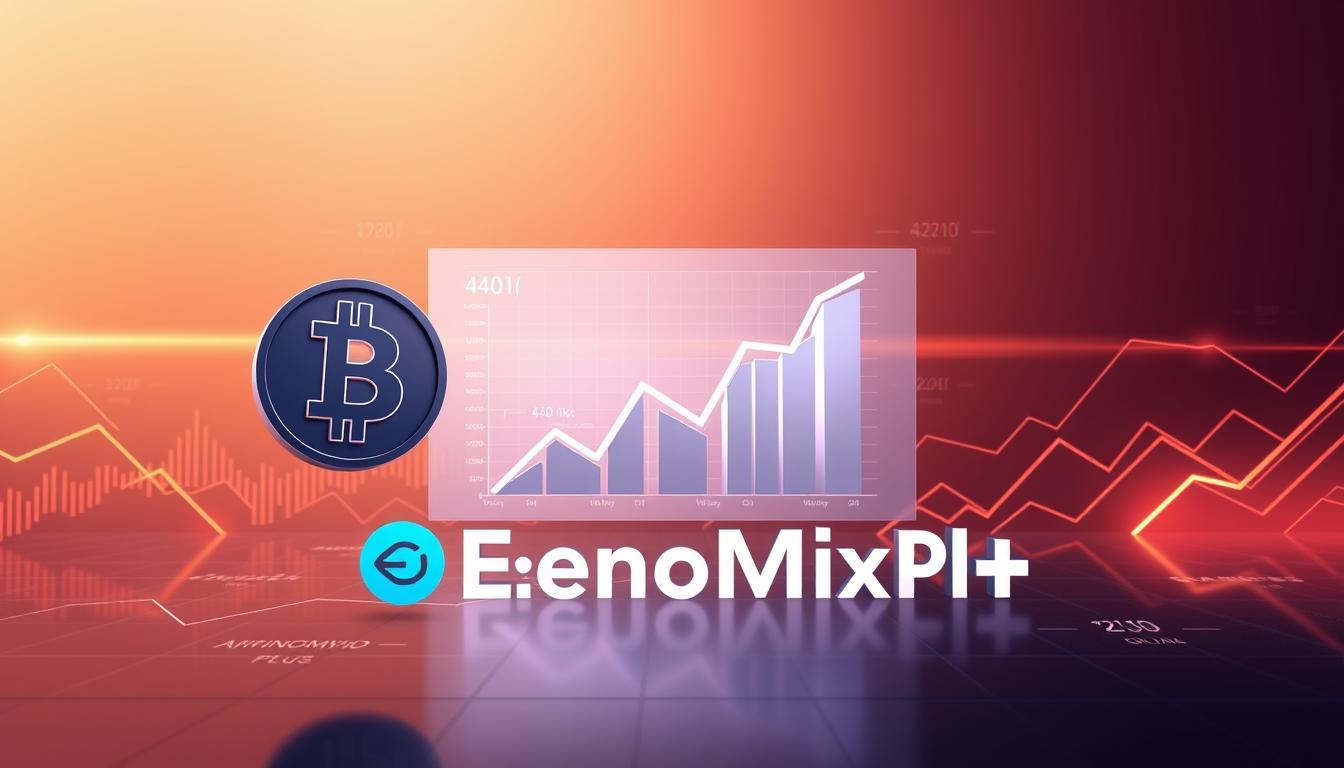What if the traditional playbook for retirement is missing a critical chapter? For decades, stocks, real estate, and 401(k)s dominated long-term planning. But today, millions are asking: could digital assets like Bitcoin and Ethereum reshape how you prepare for the future?
Once dismissed as speculative, cryptocurrencies now draw serious attention from financial experts. Ric Edelman, founder of the Digital Assets Council, predicted years ago that blockchain technology would redefine wealth management. His vision aligns with a growing trend: 20% of U.S. adults now consider crypto part of their retirement strategy, according to a 2023 Forbes survey.
This article explores how digital currencies might fit into your financial roadmap. We’ll break down potential rewards—like diversification and inflation resistance—alongside risks such as volatility and regulatory shifts. You’ll hear insights from industry leaders and see data-driven analysis to help make informed decisions.
Forget low-yield savings accounts or bonds. We focus solely on modern alternatives backed by transparent research. Whether you’re new to crypto or refining your portfolio, this guide empowers you to evaluate options with clarity and confidence.
Key Takeaways
- Digital assets are gaining traction as a non-traditional retirement option
- Blockchain technology offers unique advantages for long-term wealth growth
- Market volatility requires careful risk assessment and portfolio balance
- Expert insights help navigate regulatory and technological changes
- Personalized strategies matter more than one-size-fits-all approaches
Understanding the Landscape of Digital Assets
The financial world is shifting beneath our feet. Digital assets—like Bitcoin or Ethereum—aren’t just speculative tokens anymore. They’re reshaping how we think about ownership and value exchange. But what exactly are these new-age tools?
Breaking Down the Basics
Digital assets exist purely in electronic form. This category includes cryptocurrencies (decentralized currencies like Bitcoin), virtual currencies (centralized digital money), and tokens (assets representing ownership or access rights). Unlike traditional money, they operate without banks or governments controlling transactions.
Their appeal? Speed and global accessibility. You can send $10,000 across borders in minutes—not days—with fees often under $1. This efficiency explains why 36% of millennials now prefer crypto over stocks, per a 2024 CNBC survey.
Why Blockchain Changes Everything
Every digital asset relies on blockchain technology. Imagine a public ledger that records every transaction. This system uses advanced cryptography to prevent fraud. No single entity controls it, making hacks nearly impossible.
Decentralization also removes middlemen. You don’t need a broker to buy land in a virtual world or trade rare digital art. This peer-to-peer model empowers users but demands tech literacy. As Ric Edelman notes: “Blockchain isn’t just about money—it’s about reinventing trust.”
Understanding these terms helps you navigate conversations about portfolio diversification. Next, we’ll explore how these innovations could align with your long-term goals.
Can Cryptocurrencies Be a Smart Retirement Strategy?
Digital currencies challenge conventional wisdom about long-term wealth preservation. While traditional options like bonds offer predictable yields, blockchain-based assets operate differently—their value stems from adoption rates and technological innovation rather than interest rates.
Evaluating Potential Returns in a Volatile Market
Bitcoin’s journey from $0.08 in 2010 to over $60,000 in 2024 illustrates explosive growth potential. However, this ascent included seven 30%+ price drops in 2021 alone. Unlike savings accounts with fixed APY, digital assets swing wildly based on regulatory news and institutional adoption.
Key consideration: Allocating 1-5% of your portfolio could amplify gains without catastrophic losses. As Fidelity’s Jurrien Timmer observes: “Treat crypto like venture capital—expect high failure rates but life-changing wins.”
Assessing the Risks with Your Retirement Goals
Market crashes erase gains faster than stocks. Terra Luna lost 99.9% of its value in days during 2022. Ask yourself: Could you handle a 50% portfolio dip five years before accessing funds?
Diversification helps. Pairing Ethereum with index funds balances exposure. Younger investors often tolerate more volatility, while those nearing retirement might limit crypto positions. Tools like risk-assessment quizzes clarify your comfort zone.
Every choice involves trade-offs. Digital assets demand active monitoring but reward patience during adoption phases. Align decisions with your timeline and capacity to weather storms.
Benefits of Including Crypto in Your Retirement Plan
Modern portfolios demand forward-thinking components to stay resilient. Digital assets like Bitcoin offer unique advantages that traditional options can’t replicate—especially when aiming for long-term growth.

High Return Potential Compared to Traditional Assets
Bitcoin’s value surged from $1,000 in 2017 to over $60,000 by 2024—a 6,000% increase. Compare that to the S&P 500’s 85% gain during the same period. While past performance doesn’t guarantee future results, this asymmetric growth potential makes crypto appealing for those seeking higher returns.
| Asset Class | 5-Year Growth | Volatility |
|---|---|---|
| Bitcoin | 6,000% | High |
| S&P 500 | 85% | Moderate |
| Gold | 45% | Low |
ARK Invest CEO Cathie Wood states:
“Blockchain-based assets could outperform traditional markets as adoption accelerates.”
Diversification Benefits for Your Portfolio
Digital currencies often move independently of stocks or bonds. A 2023 Bloomberg study found Bitcoin’s correlation with the S&P 500 dropped to 0.25 during market downturns. This means adding crypto to your retirement plan could reduce overall risk.
- Non-correlated assets buffer against inflation
- Blockchain networks operate 24/7, unlike stock markets
- Decentralized systems resist geopolitical shocks
By allocating a small percentage to digital investments, you create a balanced strategy. As Fidelity’s 2024 report notes: “Portfolios with 3-5% crypto exposure showed improved risk-adjusted returns over 10-year backtests.”
These benefits hinge on strategic allocation—not guarantees. But for those comfortable with volatility, digital assets add fresh value to long-term wealth-building.
Risks and Considerations in Crypto Investments
Navigating digital investments requires clear-eyed awareness of potential pitfalls. While growth opportunities exist, understanding these challenges helps you make decisions aligned with your financial safety nets.

When Markets Move Faster Than You Can Predict
Bitcoin’s 2022 crash saw its value plummet 70% in six months—a stark reminder of volatility. Short-term price swings often exceed 20% monthly, making traditional assets like stocks seem stable by comparison. A 2023 Yale study found crypto markets react 3x faster to news events than equities.
- Sudden drops could shrink retirement funds if overexposed
- FOMO-driven purchases often coincide with market peaks
- Dollar-cost averaging helps mitigate timing risks
Rules Change—And So Do Threats
Regulators globally are still shaping crypto policies. The SEC recently classified nine tokens as unregistered securities, causing immediate price impacts. Tax reporting complexities add another layer—44% of U.S. investors misunderstood crypto tax rules in 2024, per CoinTracker data.
Security remains paramount. $3.8 billion vanished in exchange hacks last year. Opt for platforms with:
- Cold storage for most user funds
- Two-factor authentication mandates
- Insurance against theft
As cybersecurity expert Jane Smith warns: “Your keys, your coins—lose them, and no agency will bail you out.” Balancing excitement with caution keeps your strategy resilient.
Integrating Crypto with Traditional Retirement Accounts
Retirement planning just got a tech upgrade. Platforms like Alto CryptoIRA and BitcoinIRA now let you hold digital coins in tax-advantaged accounts. Over 18% of U.S. employers now offer crypto options in 401(k) plans, according to a 2024 PlanSponsor survey.

Exploring Crypto IRAs and 401(k) Options
Self-directed IRAs give you control to buy Bitcoin or Ethereum through specialized custodians. Contributions must be made in cash—you can’t transfer existing crypto holdings directly. Funds from traditional retirement accounts often require rollovers into new crypto-friendly plans.
Choosing the right platform matters. Look for:
- IRS-approved custodians using offline storage
- Transparent fee structures (setup costs average $250-$500)
- Access to multiple exchanges for price comparisons
BitcoinIRA’s COO Chris Kline notes: “Our clients value combining blockchain’s growth potential with the security of retirement accounts.” Always verify if your provider offers insurance against hacking—a critical layer missing in standard wallets.
While fees run higher than traditional IRAs, the trade-off includes exposure to assets growing 10x faster than stocks. Just remember: selling digital coins within these accounts triggers no immediate taxes—only withdrawals during retirement get taxed as income.
Choosing the Right Cryptocurrencies for Your Portfolio
Building a resilient portfolio starts with strategic selection. Not all digital assets behave the same—some act like growth stocks, others mimic stable value stores. Your goal? Identify options that align with your risk tolerance and timeline.
Market Cap and Liquidity: Your Compass
Focus on established coins with market caps above $10 billion. These giants like Bitcoin and Ethereum dominate 68% of total crypto markets, offering stability missing in smaller projects. High daily trading volume (liquidity) ensures you can exit positions without drastic price impacts.
| Asset | Market Cap | Daily Volume |
|---|---|---|
| Bitcoin | $1.2T | $25B |
| Ethereum | $420B | $8B |
| USDC | $28B | $3B |
Vanguard’s 2024 report advises: “Prioritize assets with proven network effects—avoid chasing memecoins lacking real-world utility.”
Diversify Without Diluting
Spread exposure across asset classes within crypto. Allocate 60% to large-cap coins, 30% to mid-cap platforms like Chainlink, and 10% to emerging sectors like decentralized storage. This approach balances growth potential with security.
Use multiple custodians to minimize platform risk. Services like Coinbase Custody and Ledger Vault offer insured storage—critical for protecting retirement accounts. Remember: diversification isn’t about quantity, but strategic quality.
Navigating the Evolving Regulatory Environment
Regulatory clarity remains a moving target for digital currency investments. As blockchain reshapes financial systems, agencies like the IRS and SEC scramble to update frameworks. This fluid landscape demands vigilance—especially when managing retirement plans.
Tax Traps and Fiduciary Rules
The IRS treats crypto as property, meaning every trade triggers taxable events. Holding digital assets in IRAs? Gains grow tax-free but withdrawals count as ordinary income. ERISA guidelines add another layer: fiduciaries must prove investments align with participants’ best interests.
- IRS Notice 2014-21 classifies crypto as taxable property
- DOL investigations target 401(k) providers offering high-risk options
- Form 8949 now requires detailed transaction reporting
“Plan sponsors face heightened scrutiny—choosing unproven assets could breach fiduciary duty,” warns former SEC advisor Michael Garcia.
Policy Shifts Require Proactive Monitoring
2024 brought major updates: the SEC approved spot Bitcoin ETFs, while the CFTC gained oversight of crypto exchanges. These changes impact how you manage retirement accounts. Emerging blockchain technologies like zero-knowledge proofs complicate compliance further by anonymizing transactions.
Stay ahead with these steps:
- Subscribe to regulatory newsletters (SEC’s Crypto Assets page)
- Review custody agreements annually for compliance updates
- Use tax software tracking real-time rule changes
As regulations evolve, so should your guidance sources. Pairing innovation with informed caution keeps your strategy both ambitious and secure.
Practical Guidance for Including Crypto in Your Retirement Plan
Crafting a retirement strategy with digital assets requires precision and adaptability. Start by aligning your approach with professionals who understand blockchain’s unique risks and opportunities. Only 22% of financial advisors currently offer crypto guidance, according to a 2024 Kitces survey—making specialized expertise invaluable.
Consulting Financial Advisors for Personalized Strategy
Certified advisors like Mark Parthemer emphasize: “Generic plans fail when managing volatile assets.” Seek experts certified in blockchain finance (CBCA or similar credentials) to review:
- Tax implications of holding digital coins in IRAs
- Ideal allocation percentages based on your age and goals
- Exit strategies for market downturns
Brian Spinelli, co-founder of Halbert Hargrove, advises: “Treat crypto as a satellite holding—never your portfolio’s core.” Many firms now offer blended plans combining traditional assets with regulated crypto options.
Utilizing Secure Platforms and Best Practices
Choose custodians with ironclad security protocols. Fidelity’s crypto-friendly IRA, for example, stores 98% of assets offline and uses biometric logins. Compare fees across providers—setup costs range from $75 to $500 annually.
| Platform | Storage Type | Annual Fee |
|---|---|---|
| BitcoinIRA | Multi-sig cold | $295 |
| Alto CryptoIRA | Institutional custody | $150 |
| iTrustCapital | Insured cold | $260 |
Pair accounts with hardware wallets like Ledger Nano X for added protection. Schedule quarterly reviews to adjust allocations as regulations or market conditions shift. This proactive approach keeps your strategy resilient without sacrificing growth potential.
Conclusion
Your retirement plan stands at a crossroads between tradition and innovation. Digital assets offer growth potential unmatched by stocks or bonds—Bitcoin’s 6,000% surge since 2017 proves this. Yet volatility remains fierce, with sudden drops erasing gains faster than traditional investments.
Diversification matters. Allocating 1-5% to established currencies like Ethereum could hedge against inflation while capturing blockchain’s value growth. But tread carefully: 2022’s $3.8 billion in crypto thefts and Terra Luna’s collapse highlight why security and research are non-negotiable. Always verify project legitimacy using resources like our guide on spotting crypto scams.
Regulatory shifts demand vigilance. Tax rules evolve rapidly, and fiduciary standards tighten. Partner with advisors holding blockchain certifications to align strategies with your timeline and risk tolerance.
Final takeaway? Digital currencies add modern tools to your retirement toolkit—but they’re power drills, not hammers. Use them selectively, stay informed, and let patience guide your long-term vision.














